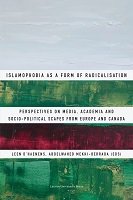By Davis, Ari; Kim, Rose; Crifasi, Cassandra K.
From the document: "Gun violence is an ongoing public health crisis in the United States that impacts the health and wellbeing of all of us. [...] Fortunately, there are evidence-based, equitable solutions to prevent gun violence. These solutions are supported by most people, including gun owners. In spite of this wide support, many policymakers have been unwilling to follow the evidence and enact policies that will save lives. Each year it is our mission to provide policymakers and the public accurate and up-to-date data on gun fatalities and illustrate the enormous toll gun violence has on our country. This report is an update of 'A Year in Review: 2020 Gun Deaths in the U.S.' [hyperlink] It uses 2021 firearm fatality data released by the CDC [Centers for Disease Control and Prevention] in January 2023. We recognize that each data point discussed in this report is a person who died by gun violence. This loss has an immeasurable impact on families, friends, and communities; data can only partly illuminate the true burden of gun violence. In addition to analyzing the data, we must listen to and uplift the voices of those directly impacted by gun violence, their loved ones, and their communities. Yet even on its own, the 2021 CDC data paints an alarming picture of the epidemic of gun violence. [...] By leveraging the data outlined in this report, we can improve gun violence prevention strategies and create a more peaceful future, free from gun violence."
Johns Hopkins Bloomberg School Of Public Health; Johns Hopkins Center For Gun Violence Solutions. 2023. 45p





















